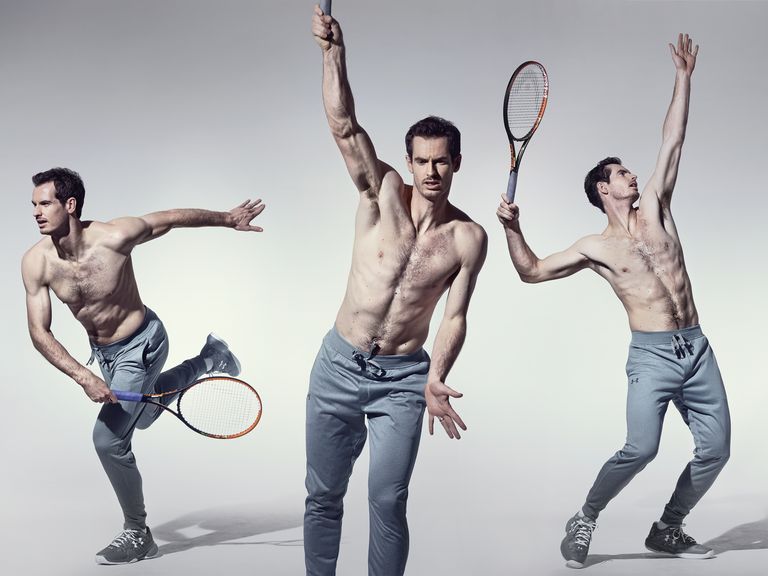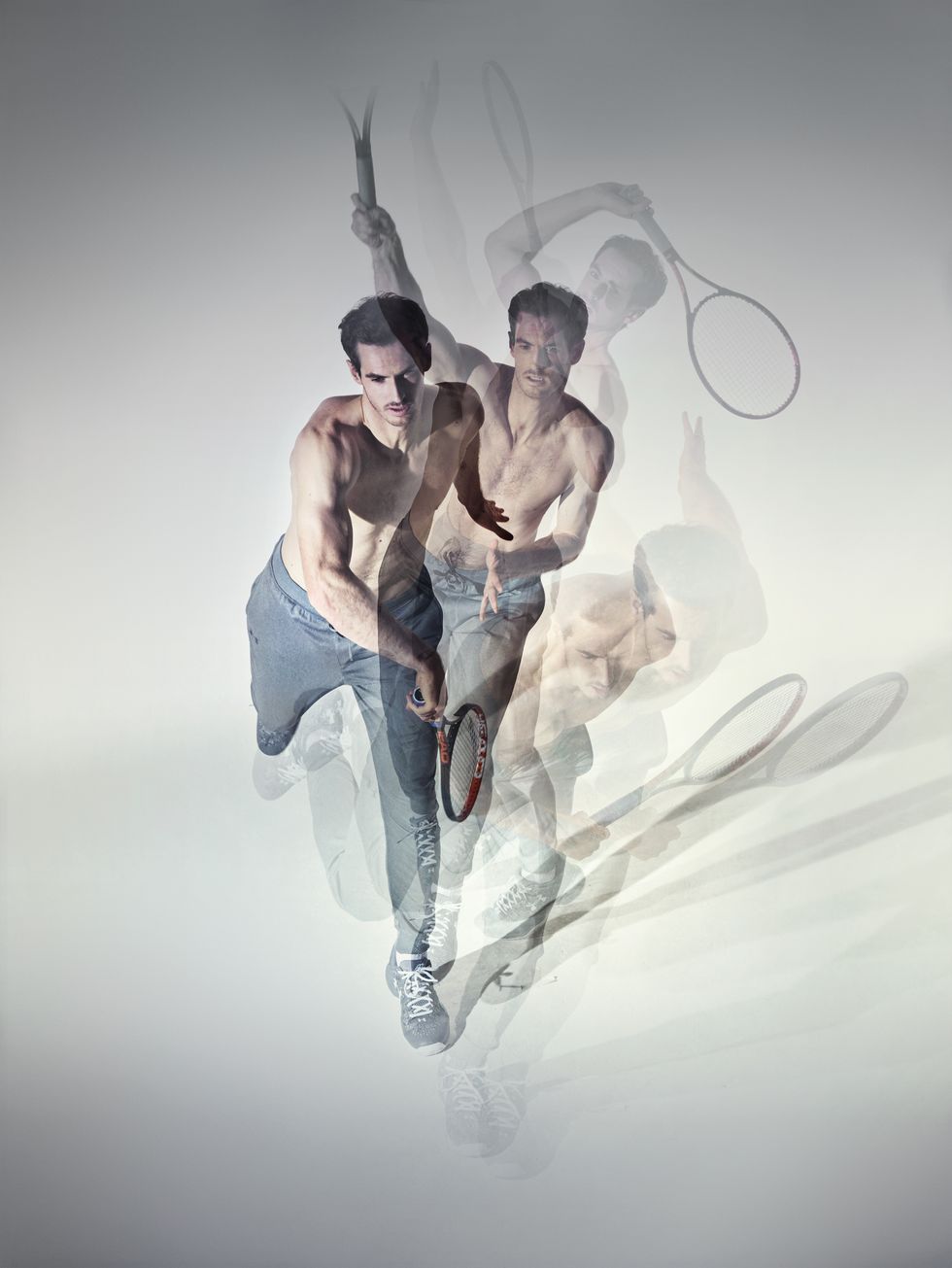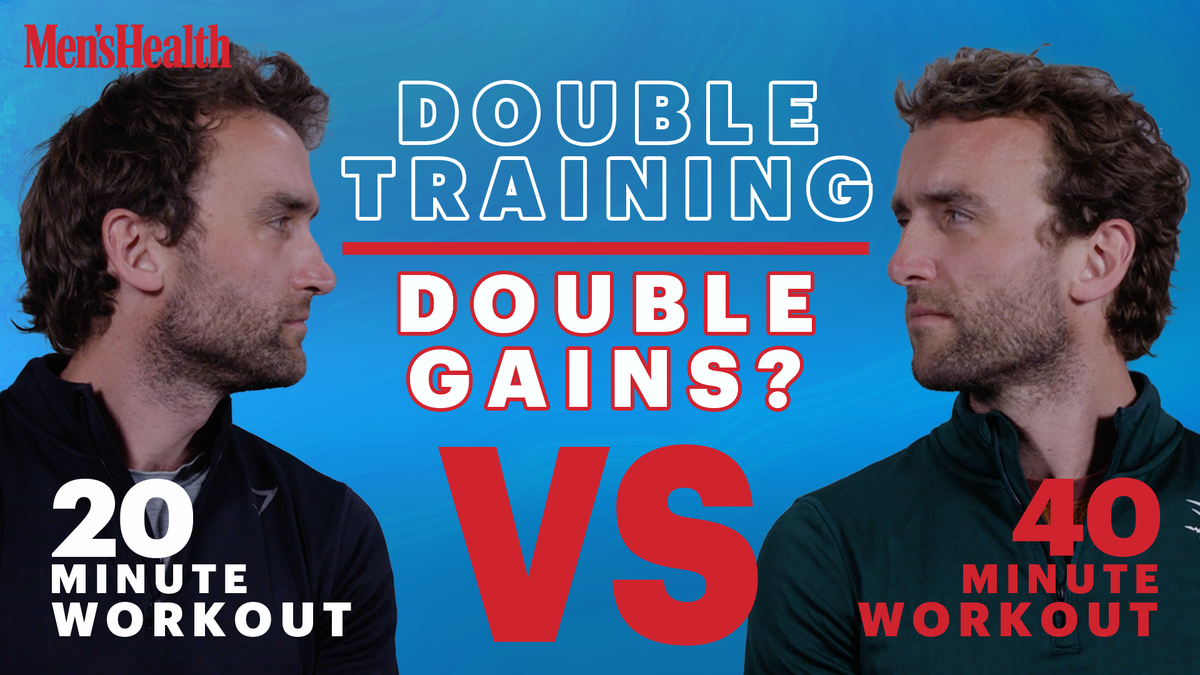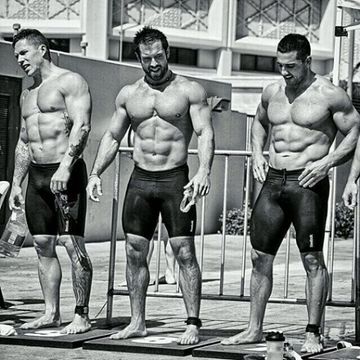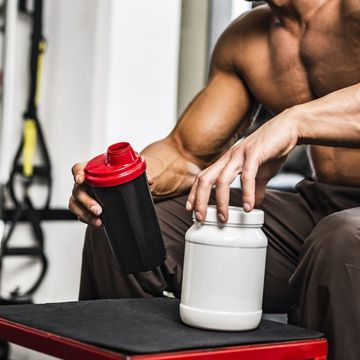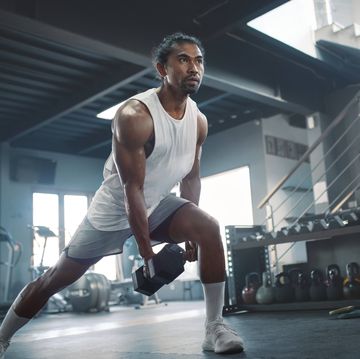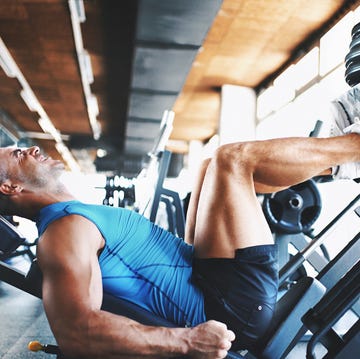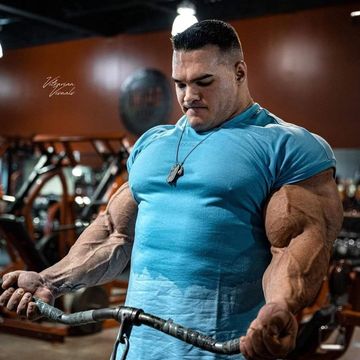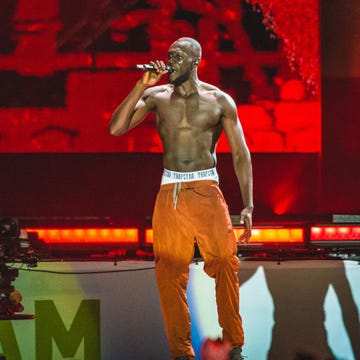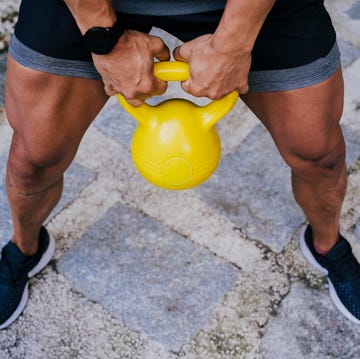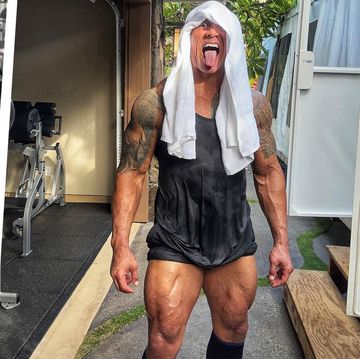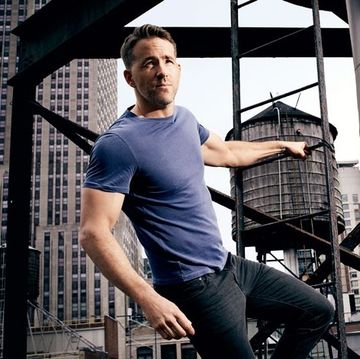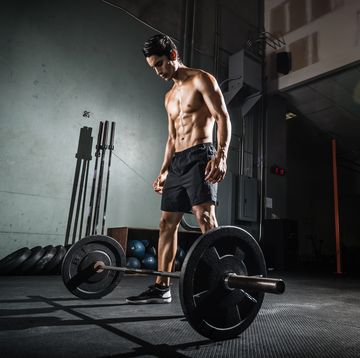A decade has passed since Andy Murray, Britain's most decorated male tennis star in the Open Era, won his first Wimbledon title. The first Brit in 77 years to lift the Gentlemen's Singles Trophy at the All England Club, Murray's long-awaited first Wimbledon triumph will live on as one of the most iconic moments in British sporting history.
Ten years, a second Wimbledon title, and one metal hip later, this month, the 36-year-old returns to the grass at SW19 in unfamiliar circumstances. After missing out on seeding for the competition after losing in straight sets in the first round of Queen’s, Murray will face either US Open champion Dominic Thiem or world number five Stefanos Tsitsipas in round two, provided he can first make it past fellow-Brit Ryan Peniston in the opening round.
Amid talks of retirement, a new generation of players, and a certain Novak Djokovic, the three-time Grand Slam winner is nevertheless resolute in his ability to roll back the years and make it all the way to the final stages of the competition. At which point, anything could happen.
Here we take a look back to 2016, the height of Murray Mania, just a few months before he won his second Wimbledon title.
At the photoshoot, Andy Murray leaps in the air, swishing his racquet in imitation of a running forehand, then lands on his appointed spot, marked on the floor by a piece of tape. Unfortunately, foot, tape and floor are misaligned and the best tennis player this country has seen since Fred Perry has to negotiate a muscle-jarring tumble that might have not just put a hole in his season, but significantly altered the tone of this interview.
Only Murray’s sense of balance saves him from potentially calamitous results – not to mention embarrassment. “Well, that was nearly a story,” his business partner, Matt Gentry, says, raising his eyebrows.
There is a hush in the studio as Murray pauses, then returns to his mark to complete the balletic task.
Life around Murray is rarely dull, on court or off. The 2011 French Open, for instance, was a sequence of comic mishaps: he got lost on the Metro; he broke his tooth on a baguette and later tore a tendon in his ankle; he won a match virtually on one leg; and he reached the semi-finals, giving Rafael Nadal, the best clay-courter of all time, a decent three-set argument.
Five years later, after winning two Grand Slam titles, an Olympic gold and a Davis Cup, there is still a sense of chaos, be it exploding during a match, or nearly splintering a leg at a photoshoot.
Break Point
Clearly, Murray has come a long way since he first walked into Wimbledon as a nervous teenage professional 11 years ago. Now an acclaimed athlete near the peak of his powers, the chronic back problems that could have ended his career in 2014 are a distant memory.
He is currently ranked the joint second-best singles player in the world (albeit several thousand points behind Novak Djokovic) and is a new and doting father. But recent months have seen a temporary derailment. Within weeks of the Birmingham Davis Cup celebrations in March, Murray fell to the 25-year-old Argentinian, Federico Delbonis, ranked 53 in the world, in the Indian Wells Masters.
It was a significant blow. He had led 4-1 in the third set, but when it came to the tiebreak, his game fell apart. “I have never really felt that I played my best tennis here,” he said afterwards, philosophically. Two weeks later, he was forced to make another losing speech when Grigor Dimitrov put him out of the Miami Masters.
Again, he was a break up in the third before a string of unforced errors destroyed his rhythm. “Indian Wells may be understandable [because of the gusting wind],” he said. “Here, not so much.” It is no disgrace to lose in a sport where there are so many matches; the week-to-week grind can bring down the best of players. Nevertheless, Murray needed all his sangfroid when he found himself. Unable to carry his fighting spirit from the Davis Cup to the Tour. It was as if he missed the intensity and craved another big challenge to motivate him. A few weeks later in Monte Carlo, he would tell a few of us that, yes, that was often the case.
Some of those who know him well, including the former British No 1 Annabel Croft, wondered if he was distracted by his new family obligations. “There was a lot of emotion,” she observed on Sky after the Dimitrov match, “a lot of backchat to the box. He admitted himself that wasn’t great and he needs to find focus. I think generally he looked exhausted.”
Davis Cup captain Leon Smith, who has known Murray since he and his brother Jamie came to prominence as prodigies in Scotland, was not so downbeat. “It’s a brilliant chapter in his life but it’s a lot to take in,” Smith said.
“There’s not been many breaks. You certainly can’t count having a child as a break!” Murray also had to bat away questions about his relationship with former coach Amélie Mauresmo, who watched the Miami match from a different part of the stadium to the box where Murray’s wife, Kim, and his support staff were located.
Murray had done something similar at the ATP World Tour Finals in London, asking his family and team to watch along way from the court as he strove for new ways to maintain his concentration. “It’s something I’ve tested to see if that might help,” he told reporters. And after speaking to us, Murray announced an amicable split from Mauresmo after two years.
The Away Game
Speaking to MH some weeks earlier, life had seemed so sun-filled and others, although it wasn’t the build-up of losses that affected him (his 22nd to the world No 1) but the external circumstances. He’d said beforehand he would have no hesitation leaving the tournament if Kim went into labour, even if he reached the final. And here he was. And there she was. Still waiting.
Her father had just blacked out in the stands while she was at home with her mother in Oxshott. That’s not a regular scenario for anyone. After he lost in the final against Djokovic, Murray was ferried overnight to Tullamarine airport for the first available ticket back to London – he’d reserved seats on three flights. But Sears recovered quickly and Murray’s daughter Sophia arrived soon afterwards, bringing the edgy period to a halt.
“[After the Australian Open] I took two weeks off without hitting a ball and that was the longest I hadn’t played since I had my surgery [in 2014],” he said. “Normally, after a week or so, I want to hit a few balls. When I got back to doing stuff, I felt much better for it. It was such a long end to last year, stressful. It’s been nice to be at home with Kim and the baby.
“It wasn’t the final that was different, it was the whole event. It was tough, and then everything that happened in the middle of it... Obviously a lot of things go on away from the court.
“Normally in a Slam, the tennis is the priority. For a number of years I hadn’t played a Slam like that; normally I’m competing for them and trying to win them, but this time I had something else on my mind as well. “I don’t think it affected my tennis so much, but it definitely gave me perspective. I had to think a little bit more about what’s important, what my values are.”
It sounded like a turning point. The conundrum for Murray was and remains: how does he cope with the twin responsibilities of parenthood and tennis? Both Roger Federer, father to two sets of twins and a travelling ad for Swiss efficiency, and Novak Djokovic, also a beaming new father, have handled it.
The question is what sacrifices will an individual make for his sport. Murray thinks he has found a good balance and, for now, he will let the cards fall where they will. He loves tennis. But he loves Kim and Sophia more.
Outside Advantage
Murray still trains as hard as ever, despite suggesting on a visit to his Miami winter camp a few years ago that he might level off as he got older. He remains ascetic about his diet.
When he won that breakthrough title at Flushing Meadows, he joined the celebration party late, picking up a bill for $6448 (£4000) at the Ling Ling bar in the upmarket Hakkasan restaurant. He had a $6 soda.
Life for Murray is calibrated – he knows no other way. A few years ago he told this magazine: “Earlier in my career I used to spend a lot of time practising my tennis on court. Now I’ve learned that it’s better to do just a couple of hours on court and two gym sessions a day. That’s what’s made me fitter and stronger. For much of the year, you’re just trying to maintain your fitness. It’s not often you get time to really concentrate on improving it.”
Back at the photoshoot, Murray gives us an update. It shows how precise his training has become. "I don’t do much running now. I stopped after the problems with my back. After my surgery I did more cardio work on the court. Before I came here today, I was doing Gyrotonics, which has made a huge difference to my life, actually. Not just my tennis but to what I can and can’t do. I still do Pilates, but a lot of it is straight lines. With Gyrotonics there is more twisting and turning, the kind of movements I use in tennis.”
Murray is on a roll. Looking after his body is one of his key enthusiasms. When he played his third match at Wimbledon in 2005, losing a five-setter to David Nalbandian, he complained that he could not match the older, stronger Argentinian for stamina.
Few listened. Get on with it, they said; it’s only tennis. Not now. What Murray has done since moving his winter base to Miami nearly eight years ago is not just admirable, but a template for others.
Returning to his latest obsession, Gyrotonics, he continues: “We got the lady who teaches it to come to a few tournaments last year. She was in Washington the week before the US Open, she did a couple of weeks with me before the clay court season, as well as the Davis Cup final. She’s been fantastic.
“I still make adjustments during the year and I tried a lot of things to help my back. It’s so much better now but I’m always trying new stuff. Sometimes you find something that makes a huge, huge difference. I used to do a lot of running on the track and then came across the Versa Climber.
“I felt I was getting huge benefits from that without my hips and knees and back taking a pounding. That made a big difference as well, a big aerobic benefit. Also, the work you get on your quads on the Versa Climber is massive.”
Courting Conflict
Elite athletes spend a lot of time on the hunt for new techniques. And of course, some take the easier route: performance-enhancing drugs. Murray, more than just about any other player, abhors their use.
He was among the most unforgiving of critics when Maria Sharapova failed a drugs test at the Australian Open for the previously unheard-of meldonium. He exchanged frank words with Djokovic over the suspension of the Serb’s compatriot, Viktor Troicki, in 2013. Other players tread warily.
Not Murray. If he feels strongly about something, he will say so.
Murray and Djokovic, born just a week after him 29 years ago, fell out more dramatically this year, when the Scot said he sometimes wondered about past opponents who had been able to go strongly to the wire in long matches.
First, Djokovic’s coach, Boris Becker, came out firing. He said Murray was “totally out of order” to make such inferences. Djokovic, a born diplomat, tried to soothe the row, though tension between them remains.
Djokovic asserts that he is good friends with Murray, whom he has known since losing to him in a junior tournament when they were 11 years old. But Murray is equivocal. He describes their relationship as that of “professional friends”.
They are cordial – and have even played five-a- side football together – but they have had their moments on court. Murray has suspected Djokovic of gamesmanship more than once, most pointedly in the 2015 Australian Open final.
But they take such contretemps in their stride. They might be closer when they retire. They might not. Neither went to each other’s wedding. Neither was upset about it. For now, Murray is happy to talk sushi, another seeming obsession; over the course of our conversation he hoovers up maybe 20 pieces.
“The first time I went to a Japanese restaurant I would have been, like, 19? I thought, there’s no chance I’m having that: raw fish, no way. The first time I tried sushi was after a Davis Cup tie. I think it was the one where Tim [Henman] retired, when we played at Wimbledon, against Croatia in ’07. We went to Nobu. And that was it. Sold. In Miami, it’s everywhere.”
Does he still stack up the calories and match the intake with a massive workout, like boxers such as Amir Khan? “No. There was a period, when I was younger and trying to put weight on, when I was looking at my calories. These days I just try to maintain my weight. I feel most comfortable at 84kg.”
He does not look as if weight would ever be a problem. “The problem for me was when I had my back surgery. When I don’t do anything, I drop weight, because I don’t have as much of an appetite.
“When I started training again, I put on quite a lot. Anyway, now it’s fine. My body fat is around 9-10%. It’s what I want. When I tried the gluten-free diet, I dropped like 5kg in the space of a few weeks, and had no energy.
The only thing that it helped was sleep but I think that was simply because I was so tired. I slept really well, but I couldn’t play tennis like that. I just didn’t have enough energy, I struggled."
It was Djokovic, of course, who led the way with gluten-free. He is the method’s champion. He is also Murray’s bête noire. Gluten-free was never going to cut it. They will surely clash this summer, perhaps here at Wimbledon, then in the Davis Cup. It is a rivalry that encapsulates the nature of modern tennis: intense, physical, psychologically demanding – and, for the rest of us, utterly engaging.
By: Kevin Mitchell; Photography: David Clerihew
